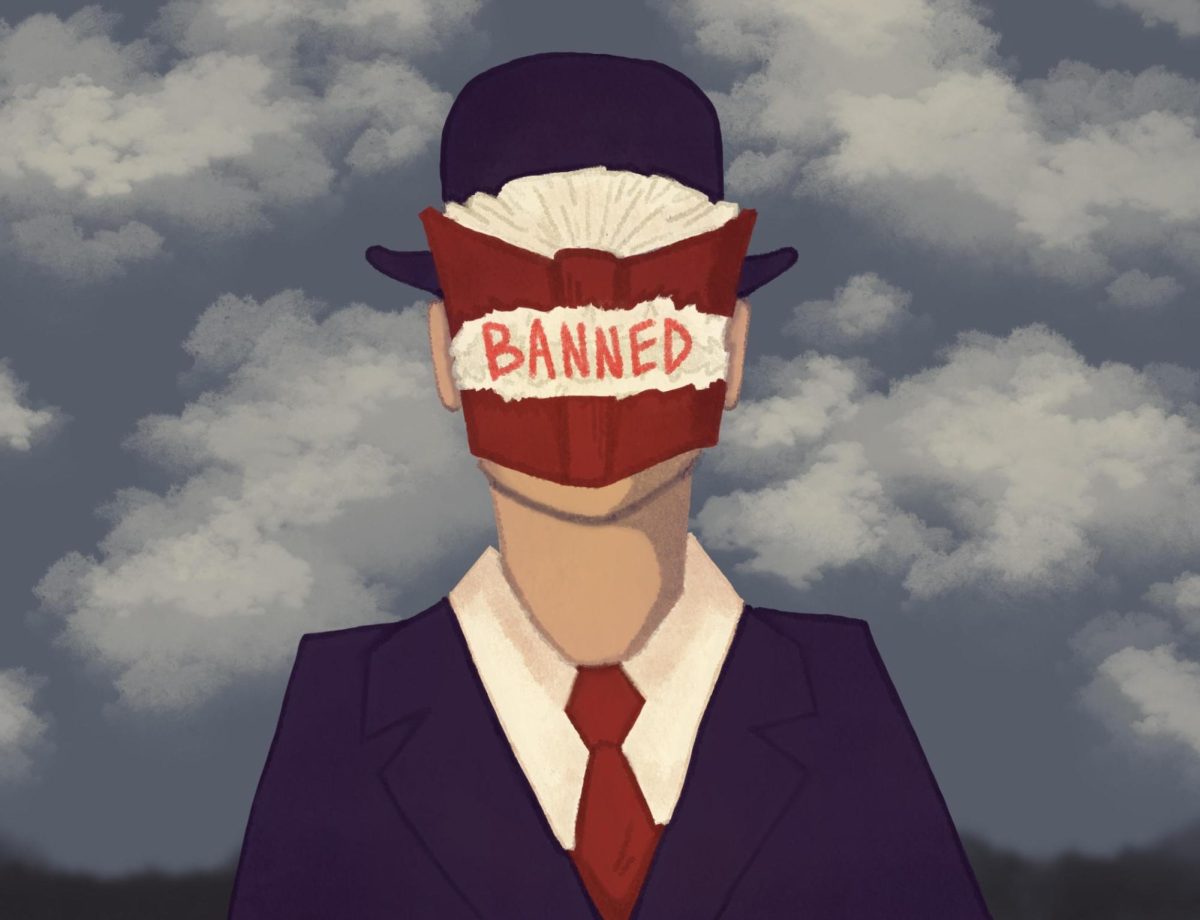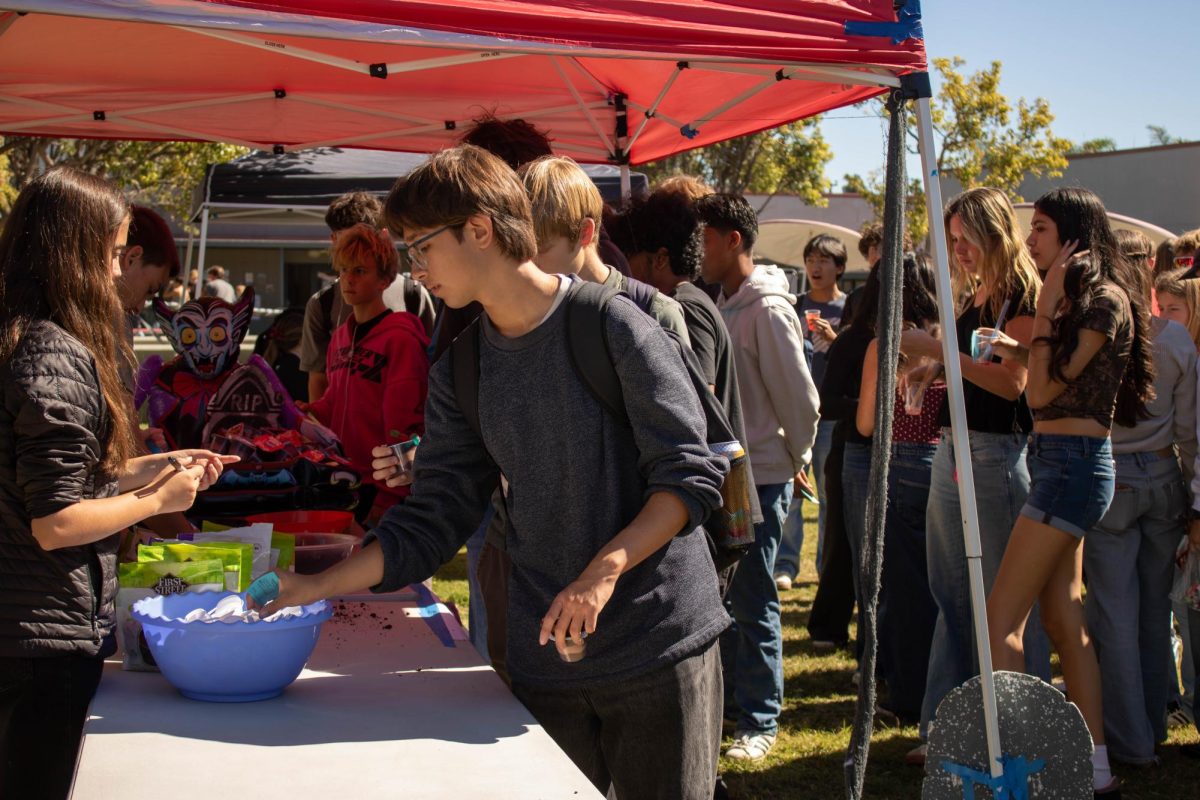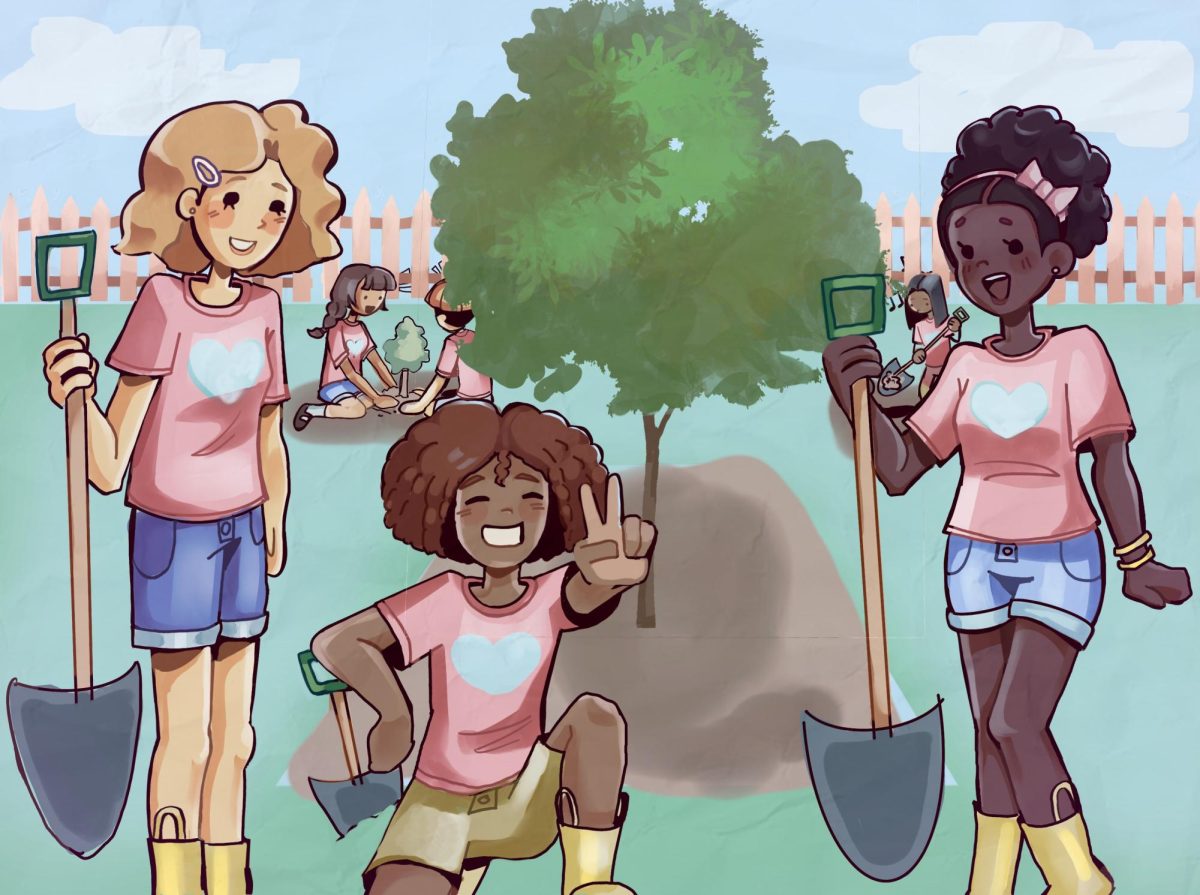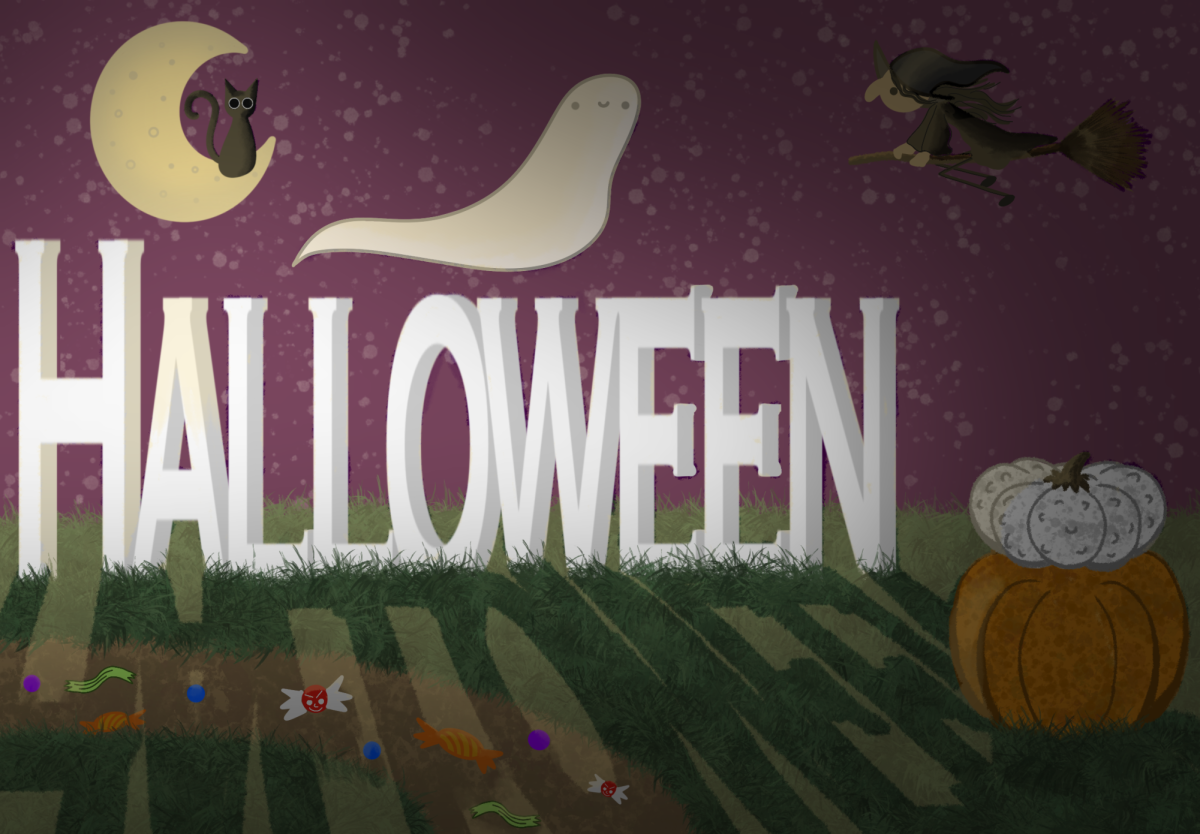For the past several hundred years book bans have existed for the sake of maintaining peace. In recent years, however, many parents, community members and teachers across the United States have been challenging books in public meetings, leading to a substantial rise in book bans now more than ever before. While some argue that the topics and themes presented in these challenged books may be important for younger audiences to learn, others claim that those very subjects could be detrimental to the well-being of society and the happiness of others. While these ongoing disputes are more prevalent now than ever, we are left with the simple question of: Why?
According to the Harvard Research Library, the first book ban took place in 1637 in Quincy, Mass., and since then, trends have shown that book bannings have increased considerably, especially in recent times. According to National Public Radio (NPR), over 3,000 book bans occurred in the 2022-2023 school year as opposed to the 2021-2022 school year, which only showed a total of a little over 2,500 book bans from classrooms and sometimes libraries. Looking at overall percentages, book bans have increased by 65 percent in the past two school years, and in the entire year of 2023, “4,240 unique book titles were targeted for removal from schools and libraries,” as shown by the American Library Association. (See infographic for the most banned books of 2024.)
So, how are books banned? The process of book bans, most of the time, is actually quite simple. As put by the First Amendment Museum, “‘Challenging a book is the attempt to ban a book from a library, school district, institution, organization, government entity, retailer or publisher based on its content. Challenges can either result in the book being banned or they can be overturned and the book remains in circulation at the organization.”
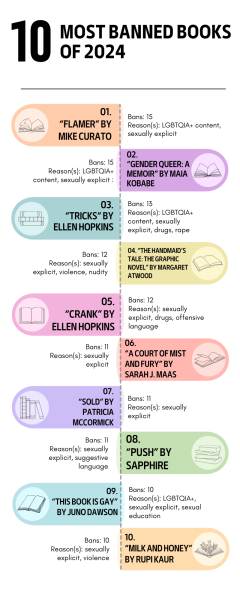
While the challenging process may sound complicated, it isn’t always. Challenging, and therefore attempting to ban books, can be expressed through an act as straightforward as refusing to carry a book in a school library, or a store declining to sell a certain book. However, it is incredibly difficult for a book to be banned throughout the entire country thanks to the First Amendment Right preventing freedom of speech and freedom of the press from being smothered. Despite this, some attempts on book bans have made it to the Supreme Court.
The rise in book bans can be traced back to the differences in today’s society as opposed to the way things were before the spike in bans. For example, topics such as LGBTQIA+ awareness and racial injustice have become more normalized than before, only providing fuel for the ongoing “culture war,” as debates between the sides have led to greater passion surrounding the subjects. As a result, many angered or offended parents, teachers or community members have challenged books, especially those with content involving recent events and hot topics such as the Israel-Hamas War, abortion laws, gun control etc., inspiring strong feelings from all perspectives.
Those who argue that book banning is necessary have been led to believe that content that explores more “adult-like” topics are not appropriate for young audiences, or even anyone.
The Free Speech Center goes more in-depth with this, stating that, “Those advocating a ban complain typically that the book in question contains graphic violence, expresses disrespect for parents and family, is sexually explicit, exalts evil, lacks literary merit, is unsuitable for a particular age group or includes offensive language.”
On the other hand, people who do not believe banning books is the solution argue that it violates the rights of freedom of speech and expression every American citizen is entitled to and that young audiences should be exposed to more controversial topics for the sake of forming their own opinions and to get a better grasp on how to handle being the ones who will run the world in the future.
“Opponents of bans argue that by restricting information and discouraging freedom of thought, censors undermine one of the primary functions of education: teaching students how to think for themselves. Such actions, assert free speech proponents, endanger tolerance, free expression and democracy.” The Free Speech Center explains.
Furthermore, book bans have a large impact on the communities in which they are set in place. In USA Today’s article on book bans, it is written that, “Teachers grow unsure of what they can say in a classroom. Writers question whether they should write about a certain topic for fear of becoming a target.” National Coalition Against Censorship Board President Emily Knox, in the article, supports this, “They really, really tear the community apart. You find out a lot about your neighbor, whatever it might be, and it can be very difficult to keep a community [cohesive] once there’s been an entire rift in the community.”
While both points of view have merit, a conclusion needs to be reached. It also needs to be taken into account how authors, who put their entire souls into their creations, might feel about their own work being censored.
So, do we find an equilibrium between censoring and allowing explicit content? Is there a better system that can be put in place? These questions are ones we should ask ourselves, as the future of education depends on the information that is available. Books are experiences, after all, and the ones our future generations are exposed to will be the deciding factor of how we continue on as a society.


